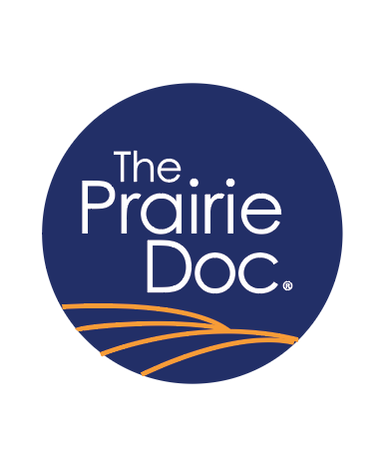Weight Loss for Diabetes Doesn’t Makes SenseBy Richard P. Holm, MD
There is an epidemic of obesity in the United States. As people get older, their risk for diabetes and diabetes-associated complications will expand like their waistlines. The average weight of 5’9 men in 1960 was 166lbs. It is now 195lbs. The average weight of 5’4 women in 1960 was 140lbs and is now 166lbs. The CDC estimates that 69% of American adults over the age of 20 are either overweight or obese. Complications of diabetes associated with obesity include premature aging of blood vessels, nerves, kidneys, and the immobility that goes with weighing too much. With this looming potential for catastrophe, we should first ask the question: “why is this epidemic happening?” Is it because of genetics? Adoption and twin studies show that we usually end up being about the same weight as our biological parents, not adoptive parents. This, however, doesn’t explain why rates of obesity are increasing. There must then be environmental factors to explain this upward trend. Is it the lack of activity of today’s youth? Is it the food that pregnant mothers eat which nourishes their babies in the uterus before birth, or the way we feed babies in the first months after birth? Is it high calorie starchy fast food? We simply do not know why this epidemic is occurring. Still, there must be something we can do. Repeated studies show, even with the best weight-loss programs, only 35% of individuals will lose significant weight. Furthermore, over the following year, only 10% of them will be able to keep it off. Over the next five years, almost all of them will return to their original weight. Nothing seems to work short of surgery, which is dangerous and not always effective—at least 50% of those people will regain their weight as well. We can therefore infer that weight loss programs are either ineffective or potentially very harmful, especially if people are shamed or criticized into trying them. My recommendation is to take or give NO CRITICISM of individuals who are overweight, especially if they have or are predicted to have diabetes. The value of each individual has nothing to do with weight and all to do with your heart. What remains most important is that obesity may not go away but diabetes gets better when we eat right (a balanced, low calorie, healthy diet with lots of vegetables) and exercise daily (like a brisk walk one to three miles a day). We should all forget about weight as the goal. Lifestyle should be the goal, along with loving yourself the way you are. Caregivers Get Back More Than They GiveBy Richard P. Holm, MD
It was a number of years ago and I was working in the emergency room when a severely compromised 20-year-old woman with cerebral palsy came in battling a lung infection. She was moderately mentally handicapped and had muscle spasticity of all her muscles which hampered her ability to cough and clean out her lungs. This was not her first time with pneumonia, and it wouldn’t be her last. What was most remarkable about her situation was the love and support she had from her entire family, not just mom and dad. Her three siblings were also part of this wonderful caregiving team. They joked with her, encouraged her, reassured her, and loved her. It was beautiful to see. The story turns sad as eventually, months later, the patient succumbed to an infection despite aggressive treatment. However, the compassion and joy I saw that day, like rays of light emanating out of her caregivers, left me happy inside. Caregivers come in all shapes and sizes and from all walks of life: male and female, spouse, adult child, parent, grandparent, friend, or hired assistant. They can provide care at home, in assisted living centers, in nursing homes, or in some other institution. They might be doing this job out of obligation, duty, financial responsibility, love, compassion, or sometimes as a job for pay. Many people develop the need for a caregiver after trauma, illness, stroke, or after reaching advanced age. Others require help from birth. The needs of the compromised individual can also vary. Sometimes they require a lot of help with everyday activities, including bowel and bladder care or even help with feeding and hydrating. Sometimes the person only needs someone to check in on them every day or give them a kind word every once in a while. After my Dad died, I found myself calling my mom for about five minutes every morning while I was on the way to work. I know she cherished these short, pleasant conversations. After several years of this, when a stroke took this pleasure away, I came to realize how much I grew from and enjoyed those daily conversations. It had been a mutual gift we were giving each other. The following lessons for caregivers might be helpful: 1. Practice listening 2. Be kind, honest, and respect your patient’s choices as much as possible 3. Seek alternatives if you’re feeling burned out 4. Realize the value you receive by the giving of yourself Watch On Call with the Prairie Doc® most Thursdays at 7 p.m. central on SDPTV and follow the Prairie Doc® on Facebook and YouTube for free and easy access to the entire Prairie Doc® library. An essay by Richard P. Holm, MDEvery physician and care provider who has been practicing for a while can tell you stories of people who were hospitalized with an unknown illness and cured by simply reducing the number of medicines they were taking. A daughter once brought her increasingly confused and failing elderly father into the clinic to see me. He had been living in a Minneapolis nursing home and was taking a “shoebox” of medicines prescribed by multiple different VA providers. The daughter asked if there were any changes that might help. She was elated when I dropped the pill count down from twenty to six.
In two weeks, he returned to the clinic remarkably improved. Following a move to Brookings, he enjoyed something like three good years of life in an assisted living center, his daughter’s family nearby, until a quick death came following an infection. The daughter told me that after stopping all those pills, her father went from a zombie to rejoining the living world again—reading newspapers, hanging with new friends, playing pinochle, attending church, and going out to dinner with his family. Medications are overprescribed in this country, and there are many reasons for this culture of pills. Care providers are being pressured to follow health care protocols which are basically recipes for care. These recipes are an attempt to improve quality but often do the opposite and encourage adding unnecessary pills. Other causes include excessive prescribing by the specialists that are also seeing the patient, the time limits that care providers are allowed with patients and their overzealous wish to satisfy their patient, the pharmaceutical industry’s excessive promotional efforts including their direct-to-public advertising (which is not allowed in most other countries), and the patient’s desire for an easy pill rather than a tougher lifestyle change. Health care protocols, physicians, the pharmaceutical industry, and patients are all to blame for the burden of polypharmacy that has taken hold of our country. Medications intended to be helpful can sometimes be harmful. It should be a careful, well trained, and considerate care provider—not a protocol or an advertising campaign—that determines when a new medicine should be started. Please DO NOT stop any medicine you are presently taking. However, every time you see your care provider, start with the statement that you are not seeking another medicine unless it is necessary, and ask if there are any medicines that can be stopped. An essay by Richard P. Holm, MDFor the last two years, as I have been wrestling with my own health problems, I have experienced superb care provided by emergency room (ER) docs, hospital docs, and (after I was sent home) outpatient care providers. This included my primary care internist in Brookings, my teleconferencing oncologist from Sioux Falls, and my surgeon from Rochester. I’ve experienced and benefited from the perspectives of several scopes of practice. There has been a great deal of change from the way we used to do it, and I think we have to embrace the change.
When moving to South Dakota in 1981, I was not surprised to learn that those of us in the “Brookings Clinic” shared call and the responsibility of the ER, took care of our own patients in the hospital and saw people in our outpatient clinic Monday through Friday. This was a lot of work, but it taught all of us to know and appreciate the constant changing face of medicine and gave physicians an “up-close-and-personal” relationship with our patients. Then, over time, hospitals throughout the state started hiring docs who worked exclusively in the ER. In Brookings, that change made our home lives better, but we lost some of our ER talents in exchange. Next, maybe 15 years ago, we obtained the electronic Intensive care unit (e-ICU) which gives our ICU patients the advantage of the extra eyes of a remote ICU specialist, allowing sicker people to stay in rural hospitals. However, the biggest change in the last few years involves how those patients admitted to hospitals are now being cared for by hospital care specialists (hospitalist). Presently, when patients go home, there is a hand-off that must occur between the care of the hospitalist and the patient’s own primary care provider in the outpatient clinic. It is this hand-off which many believe could be better and is the center of an ongoing debate among doctors. I would advise patient and family to watch-dog this transition to make sure the hospitalist spoke with their outpatient care provider. Scientific evidence-based studies have shown that the best overall care happens when it starts with an established outpatient primary care relationship. The best (and least expensive) health care would happen in this country if EVERYONE had a designated primary care provider who would hand-off and receive from the hospital team when necessary. Change is happening, and the benefits far outweigh the risks if only each of us could find and establish a relationship with a primary care provider. |
Archives
July 2024
Categories |
 RSS Feed
RSS Feed


